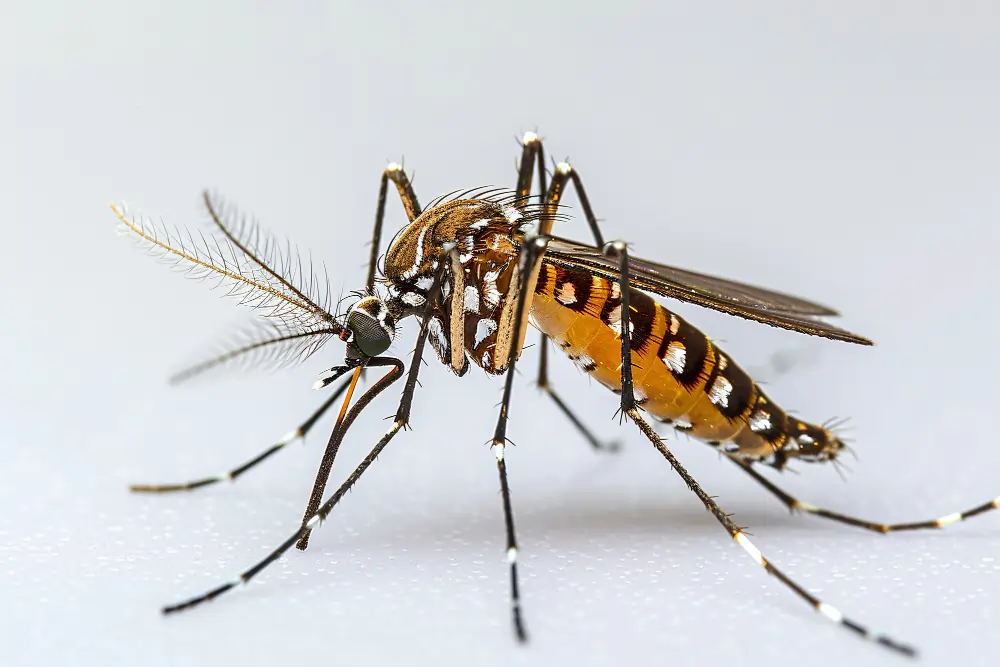
Malaria, a disease caused by infection with the Plasmodium parasite, poses a significant global health challenge. Understanding the causes, symptoms, and treatment of malaria is crucial for preventing its spread and ensuring prompt medical intervention. In this article, we will delve into the intricacies of malaria, shedding light on various aspects to help you comprehend this prevalent disease better.
Introduction
Defining Malaria
Malaria is a life-threatening illness transmitted through the bites of infected female Anopheles mosquitoes. These mosquitoes carry Plasmodium parasites, which enter the human bloodstream during a bite and cause infection. Once inside the body, these parasites multiply in the liver and then infect red blood cells, leading to the characteristic symptoms of malaria.
Importance of Understanding Malaria
While the disease is uncommon in temperate climates, malaria is still common in tropical and subtropical countries. Each year nearly 290 million people are infected with malaria, and more than 400,000 people die of the disease. By understanding the causes, symptoms, and treatment of malaria, individuals can take appropriate preventive measures and seek timely medical care. Consequently, the burden of the disease can be reduced, and lives can be saved.
What Causes Malaria
Overview of Malaria Parasites
Malaria is caused by several species of parasites belonging to the Plasmodium genus. The most common parasites responsible for malaria in humans are Plasmodium falciparum, Plasmodium vivax, Plasmodium malaria, and Plasmodium ovale. Each species varies in terms of geographic distribution and severity of illness they cause.
Transmission through Mosquitoes
The transmission of malaria occurs when a female Anopheles mosquito carrying the parasite bites a human. The parasites then enter the bloodstream, initiating the infection. It’s important to note that malaria is not contagious and cannot be transmitted directly from person to person like a common cold.
Different Malaria Species
Plasmodium falciparum is the most severe form of malaria and can lead to fatal complications if left untreated. Plasmodium vivax is the most common species outside of sub-Saharan Africa and can cause recurring bouts of illness. Plasmodium malaria and Plasmodium ovale are less common species but still contribute to the global malaria burden.
Signs and Symptoms
Incubation Period
After being bitten by an infected mosquito, it may take anywhere from 7 to 30 days for symptoms of malaria to appear. This period, known as the incubation period, depends on various factors, including the parasite species and the individual’s immune response.
Common Symptoms
The typical symptoms of malaria include fever, chills, sweating, headache, muscle aches, and fatigue. Some people who have malaria experience cycles of malaria “attacks.” An attack usually starts with shivering and chills, followed by a high fever, followed by sweating, and a return to normal temperature.
Severe Malaria Symptoms
In severe cases of malaria, symptoms may escalate rapidly and lead to life-threatening complications. Such symptoms include high fever, anemia, respiratory distress, impaired consciousness, and organ failure. Immediate medical attention is vital in such instances.
Diagnosis and Testing
Medical History and Physical Examination
To diagnose malaria, healthcare professionals gather a detailed medical history and perform a thorough physical examination. This helps them identify potential risk factors and ascertain whether malaria is a likely diagnosis.
Blood Tests for Malaria
Blood tests, such as microscopy and polymerase chain reaction (PCR), are widely used to confirm the presence of malaria parasites in the blood. Microscopy involves examining a blood sample under a microscope to detect and identify the parasites. PCR, a molecular technique, amplifies the parasite DNA for sensitive detection.
Rapid Diagnostic Tests (RDTs)
Rapid diagnostic tests (RDTs) provide a quick and easy method for malaria diagnosis, especially in resource-limited settings. These tests detect specific malaria antigens in the blood and produce results within a short timeframe, enabling prompt treatment initiation.
Preventing Malaria
Vector Control Measures
Vector control plays a vital role in malaria prevention. Efforts include reducing mosquito breeding sites, using insecticides, and employing physical barriers to protect against mosquito bites. Combining these methods provides the best chance of preventing malaria transmission.
Insecticide-Treated Bed Nets
Insecticide-treated bed nets create a protective barrier, preventing mosquitoes from accessing individuals while they sleep. Effectively used, these nets significantly decrease the risk of mosquito bites and, consequently, malaria infection.
Indoor Residual Spraying
Indoor residual spraying involves applying insecticides to the interior walls of houses, where mosquitoes rest after feeding. This intervention helps reduce the mosquito population and their ability to transmit malaria.
Anti-Malarial Medications
Artemisinin-Based Combination Therapies
Artemisinin-based combination therapies (ACTs) are the most effective antimalarial drugs available. These combinations involve pairing an artemisinin derivative with another antimalarial drug to provide a dual-action approach, targeting different stages of the malaria parasite’s life cycle.
Other Drugs for Malaria Treatment
Apart from ACTs, other drugs, such as chloroquine and mefloquine, are utilized based on the parasite’s resistance patterns in specific regions. It’s vital to consult healthcare professionals for the most suitable treatment options, especially if traveling to malaria-endemic areas.
Treatment for Severe Malaria
For individuals with severe malaria, hospitalization, and intravenous antimalarial treatment become necessary. Artesunate, quinine, and intravenous fluids are typically administered to manage complications and restore health.
Malaria Prevention for Travelers
Pre-Travel Considerations
If traveling to areas with a high risk of malaria transmission, certain precautions must be taken. Researching the malaria situation at the destination and understanding personal risk factors helps in making informed decisions.
Effective Use of Prophylaxis
Prophylaxis, or preventive medications, can be prescribed to individuals traveling to malaria-endemic regions. These medications help reduce the risk of infection but require strict adherence to dosage instructions for optimal protection.
Personal Protection Measures
Using mosquito repellents, wearing long-sleeved clothing, and staying in air-conditioned or well-screened accommodations are additional measures that can minimize exposure to malaria-carrying mosquitoes.
Malaria Risk Areas

Global Distribution of Malaria
Malaria is prevalent in over 90 countries, predominantly in tropical and subtropical regions. Sub-Saharan Africa bears the highest malaria burden, while other regions, including Southeast Asia and the Americas, also experience significant transmission.
High-Risk Regions
Within countries affected by malaria, certain areas carry a higher risk than others. Factors such as altitude, climate, mosquito species, and local control efforts contribute to variations in malaria transmission intensity, making some regions more prone to the disease.
Malaria Elimination Efforts
Many countries are actively working towards malaria elimination through strategic interventions, improved surveillance, and better access to diagnostics and treatment. These efforts aim to reduce the malaria burden and eventually eliminate the disease altogether.
Other Malaria-Related Topics
Malaria in Pregnant Women and Children
Pregnant women and young children are particularly vulnerable to malaria infection. Malaria in pregnancy can lead to adverse outcomes for both the mother and the unborn child. Special attention and tailored interventions are essential for protecting these vulnerable groups.
Malaria and Anemia
Malaria can cause anemia, a condition characterized by a reduced number of red blood cells. This can exacerbate the effects of malaria and contribute to increased morbidity and mortality. Treating malaria promptly helps prevent severe anemia and its associated complications.
Malaria and Climate Change
Climate change can influence the transmission dynamics of malaria, affecting its geographic distribution and seasonality. Changes in rainfall patterns, temperature, and ecological factors impact mosquito populations and parasite development, potentially altering malaria transmission patterns.
Conclusion
Malaria remains a significant global health challenge, particularly in regions with high transmission rates. Understanding the causes, symptoms, and treatment of malaria plays a crucial role in preventing its spread, ensuring timely diagnosis, and administering appropriate treatment. By implementing targeted interventions and promoting awareness, we can make substantial progress in reducing the burden of this deadly disease.
FAQs
1. What are the long-term complications of malaria?
Long-term complications of malaria can include neurological issues, anemia, organ damage, and growth retardation in children.
2. Can malaria be transmitted from person to person?
No, malaria cannot be transmitted directly from person to person. It requires the bite of an infected mosquito to spread.
3. Is there a vaccine available for malaria?
While no highly effective malaria vaccine is commercially available, ongoing research and development efforts are making progress in this direction.
4. Can you get malaria from blood transfusions?
Yes, in rare cases, malaria can be transmitted through infected blood transfusions. Proper screening and testing of blood donors help minimize this risk.
5. How long does it take to recover from malaria?
The recovery time from malaria varies depending on various factors, including the severity of the infection, the individual’s overall health, and the effectiveness of the treatment. It can range from a few days to several weeks.


